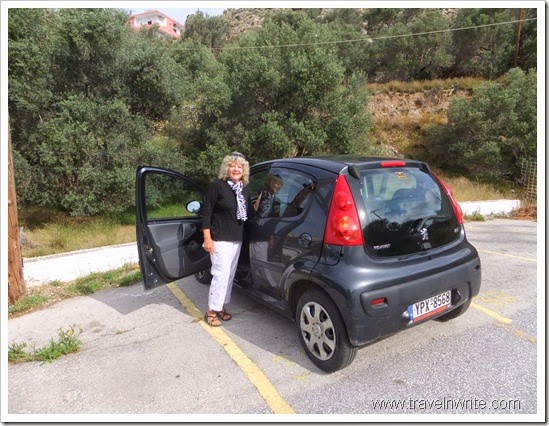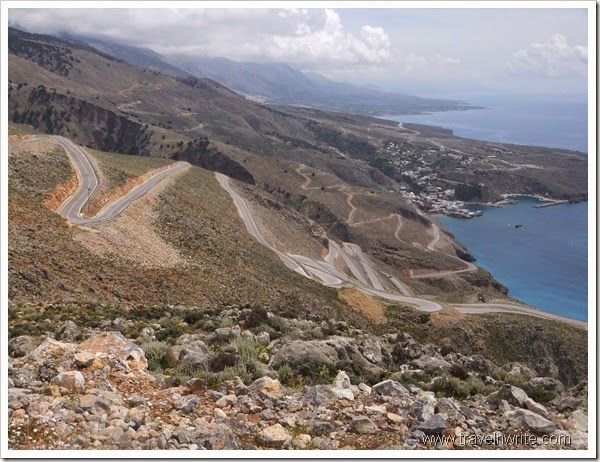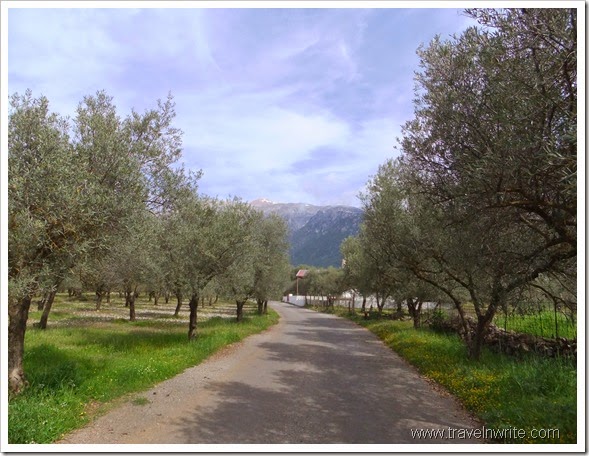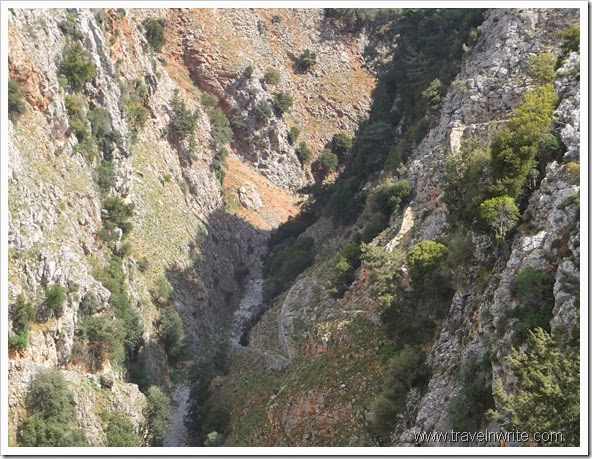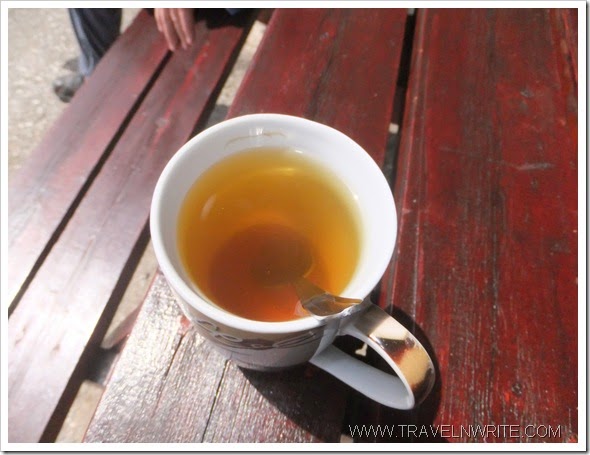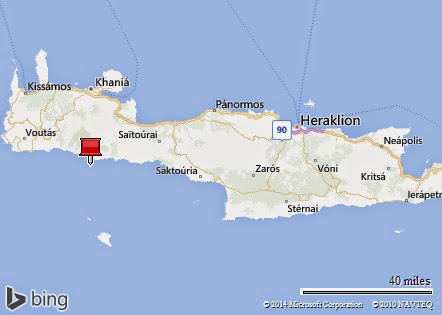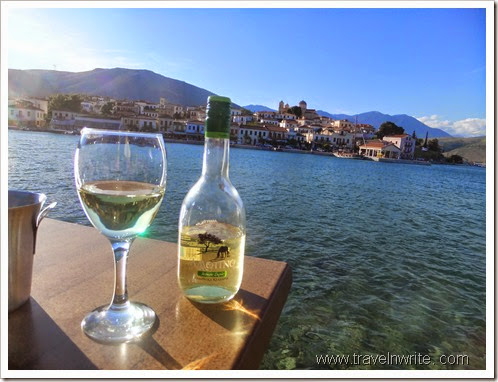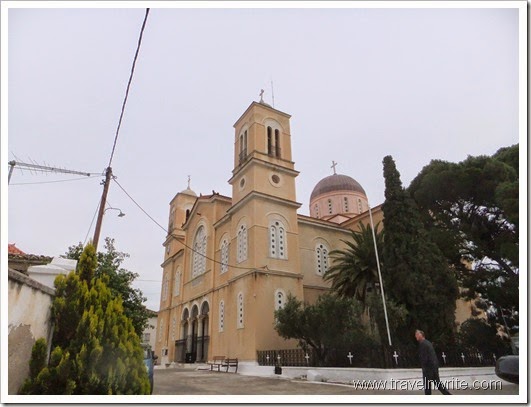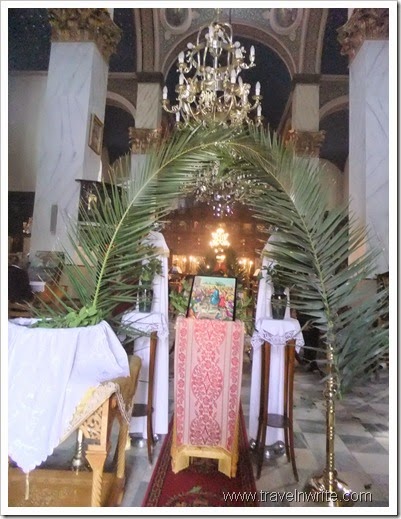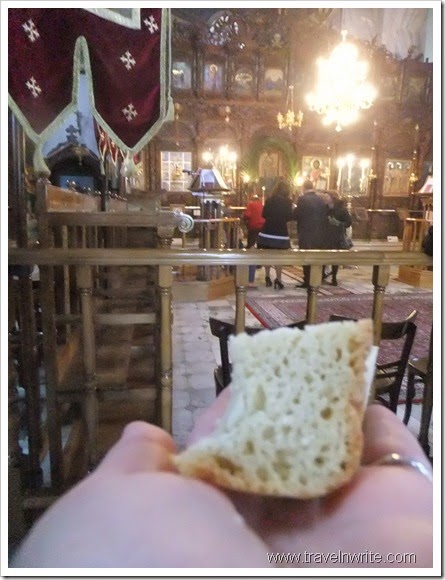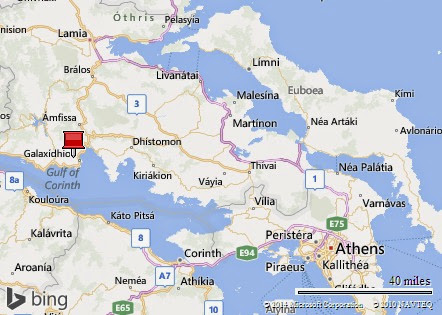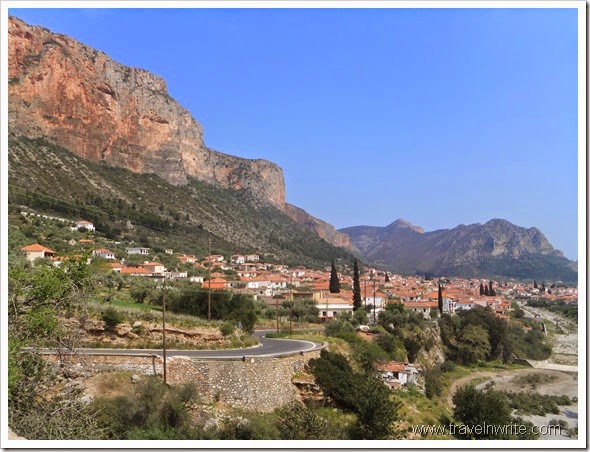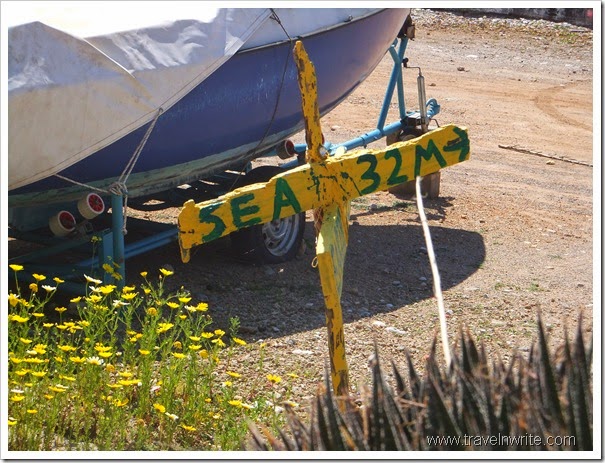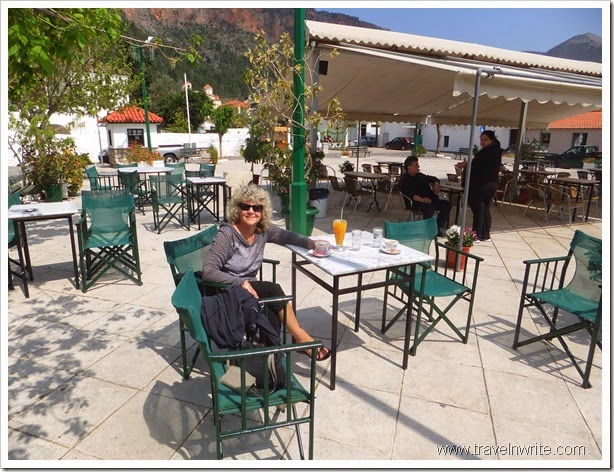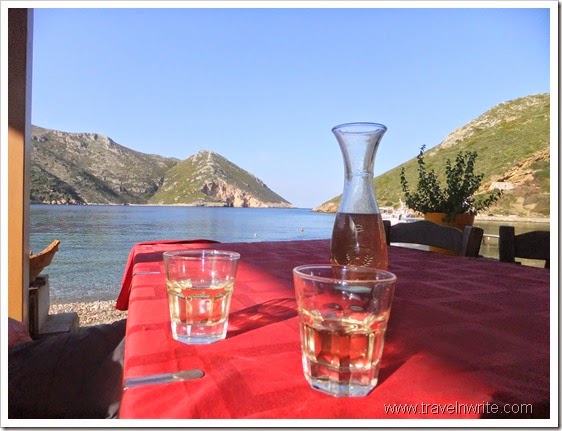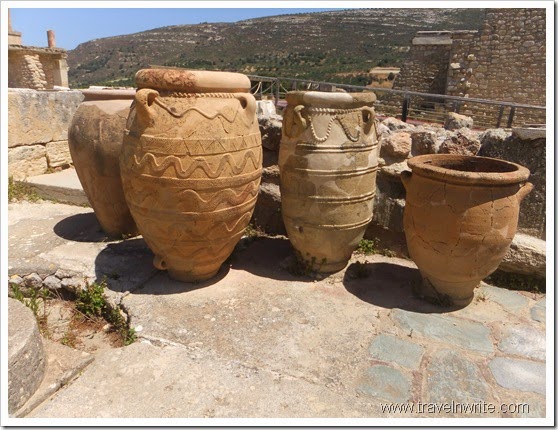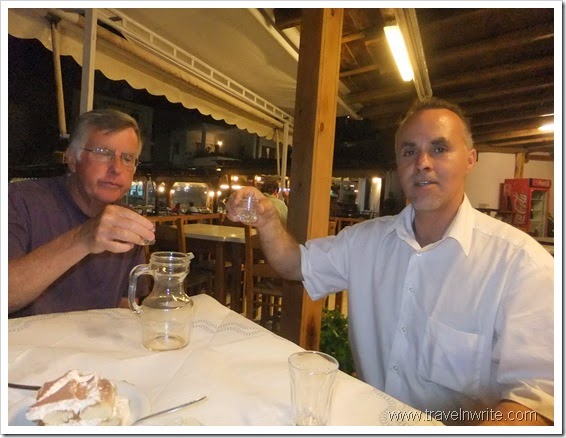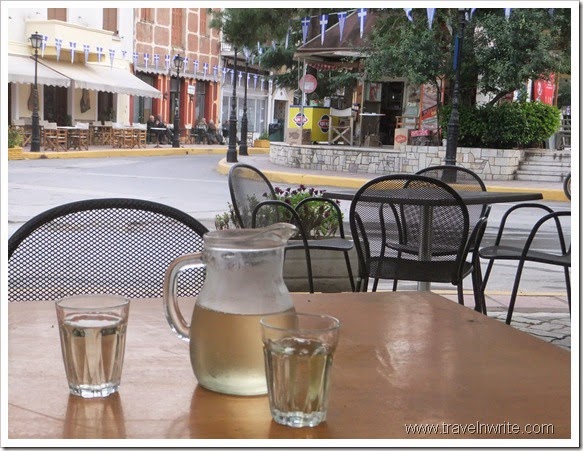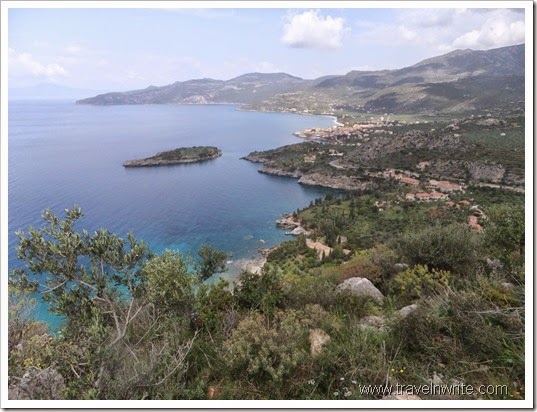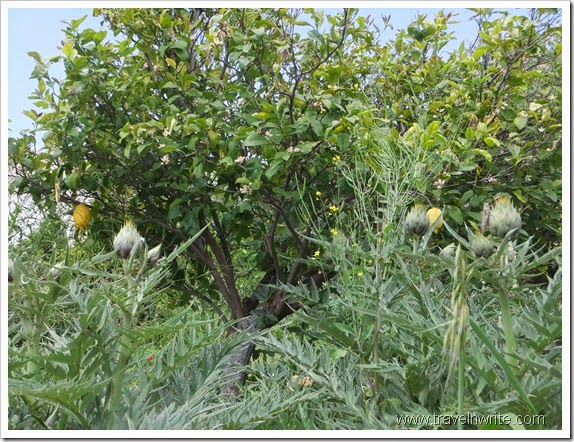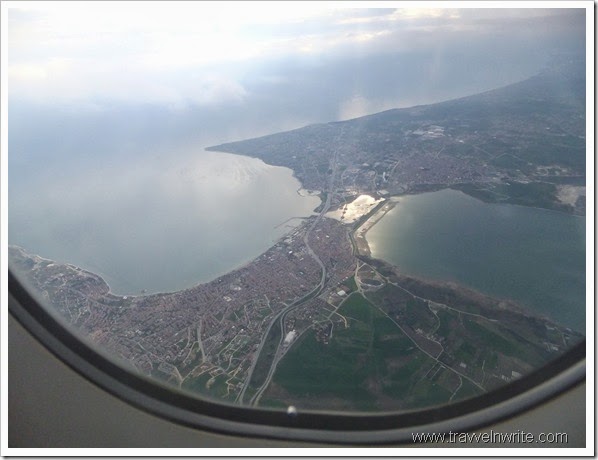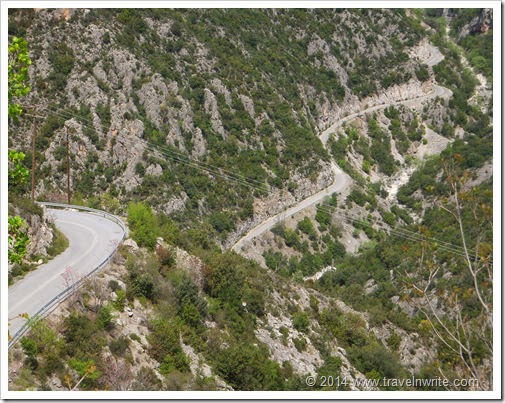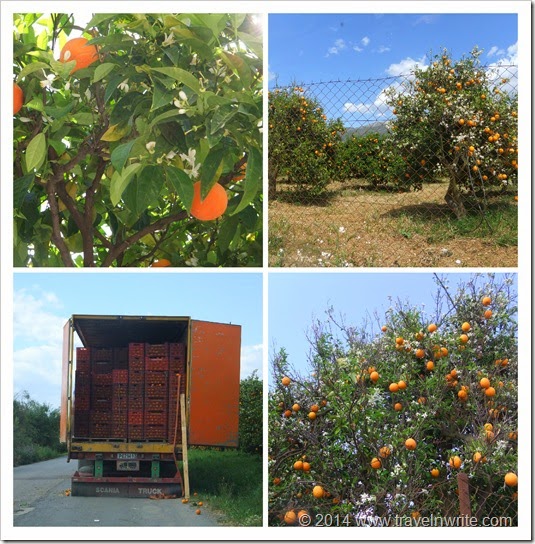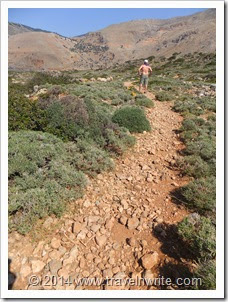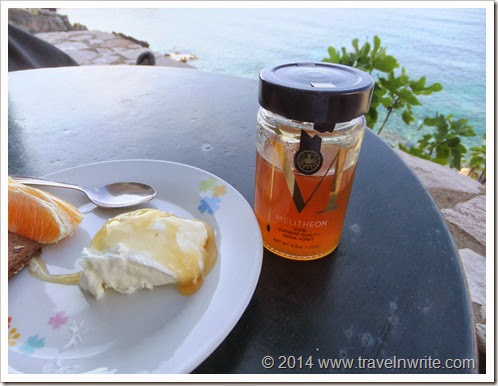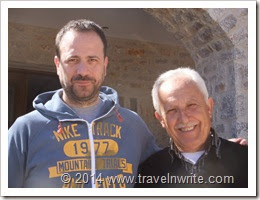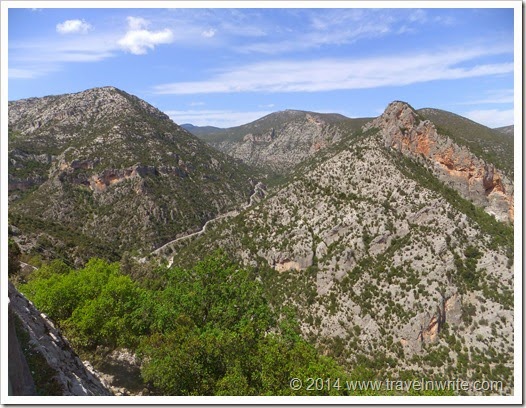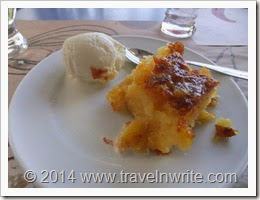Our teeny tiny car came in handy today as we took one of our favorite road trips high up into the mountains behind the port town of Chora Sfakia, where we are staying on Crete’s southern shore. We were headed to Anopoli, another small town, and then on to Aradena, a virtually abandoned township a couple of kilometers beyond it. Come along for the ride, but buckle up – this isn’t for white knucklers:
I took this photo at about midpoint of our journey, that’s our little town of Chora Sfakia towards the right side of the photo. Because The Scout is also The Driver here (manual shift cars) I had time to count the 38 turns, a mix of sharp hairpin spinners and to take photos of the animals that like to rest on those curves.
We were heading into the south coast’s rugged and beautiful interior country; a haven for hikers and outdoor enthusiasts.
We limited our ‘hiking’ to a stroll through the olive groves that surround Anopoli, – once such a bustling place that it minted its own coins – today, it is a starting point for a number of hiking trips. Two kilometers further down the narrow road we crossed the Vardinogiannis Bridge, a single span of wooden beams and steel frame some 138 meters, or 455 feet above the Aradena Gorge. Just wide enough for our teeny, tiny car!
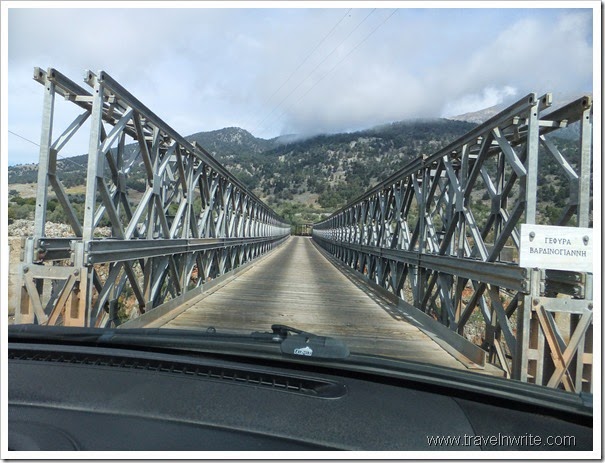
Cars cross the bridge slowly, almost hesitantly, the majority are driven by tourists who venture here – either sightseeing or en route to do some hiking into the gorge. The noise that reverberates throughout the area when a car crosses those beams sounds similar to a series of explosions re-echoing through the gorge.
The gorge is not only popular with hikers, but the bridge – according to the guidebooks – is a popular bungie jumping point – and holds the distinction of being the highest such point in Greece. (No thank you!)
Those two highlighted spots on the right of the photo above are parts of the trail that leads into the gorge. I have to admit that once again we wish we had packed shoes suitable for hiking. . .as these gorges are far too inviting. (And for you ‘boomer’ travelers out there: a majority of the hikers we’ve seen here sport varying shades of gray or white hair so there really are no excuses for not hitting the trail!)
There’s a lone cafe to the side of the bridge and on its menu was “mountain tea with honey’. We’ve seen that in rural areas and finally gave in to curiosity. . .and now are hooked on this magnificent tea made from plants/herbs/flowers gathered from the upper reaches of the area’s White Mountains or Lefka Ori, It is served with a hearty dollop of locally made honey.
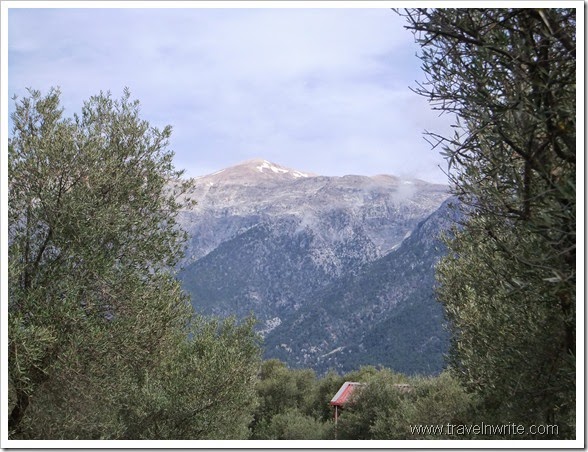 |
| Crete's White Mountains |
We’ll head a bit further west on this southern coast of Crete, overlooking the Libyan Sea when we hop the ferry on Friday to Loutro for Easter weekend. Sorry we’ve not had the time to tell you more about the places we’ve been but we are trying to keep you along in real time and we’ve been on the move for the last week. I’ll fill in some of the gaps when we are back home and basking in the afterglow of the trip.
Hope you’ll stay with us as we move on after Easter to . . . well, we don’t know where we are going after the weekend.
We’ve considered staying in Crete a bit longer, or heading to Thessoloniki in the north of Greece, or returning to The Mani or to Poros Island or perhaps Mykonos and Santorini. . . or perhaps, Egypt. No joke. We are ‘sort of’ in the neighborhood . . .and we’d still have time for a few nights in Istanbul.
Linking up today with Budget Travelers Sandbox, Travel Photo Thursday.
